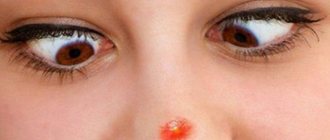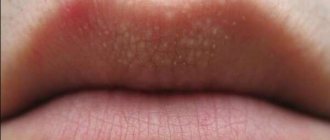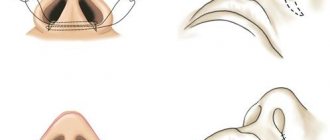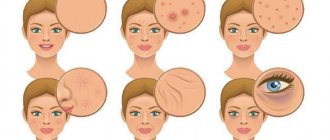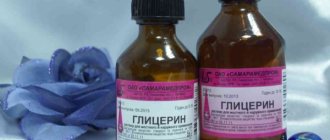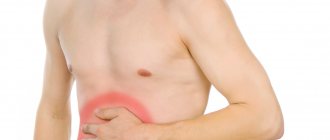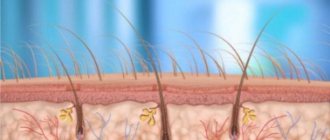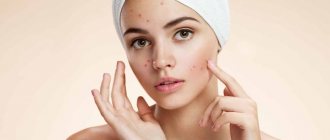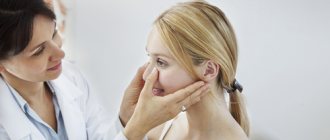Why do rashes appear on the nose?
Most teenagers experience acne on their face due to hormonal changes. In this case, there is intense production of subcutaneous fat by the sebaceous glands, which clog the pores, which leads to inflammation of the skin.
After 20 years, in 80% of cases, acne on the nose goes away on its own. If they persist into later life, this indicates the presence of specific diseases.
When pimples appear on the nose, the reasons for men can be varied. The most common factor is hormonal imbalances, which requires immediate contact with an endocrinologist. In second place is a digestive problem caused by poor diet.
The third reason for the formation of acne on the nose is clogged pores. The skin of the respiratory organ has a special structure with pores close to the surface. Therefore, even the settling of a small amount of dust on the face leads to the appearance of blackheads and acne.
For your information: at the age of 14-19, acne on the nose occurs in 40-50% of young men due to hormonal disorders. At 22 years old, skin inflammation is observed in 5% of guys; at 30-40 years old, only 1% of people have rashes on the face.
Other causes of acne:
- heart and liver problems;
- climate features (the likelihood of acne formation increases in hot and humid weather);
- hereditary predisposition;
- taking antibiotics or steroids;
- long-term abstinence from sexual intercourse;
- demodicosis (occurs when the pH of the skin is disturbed, when the subcutaneous mite is activated in the sebaceous glands);
- improper or inadequate skin care;
- tanning (ultraviolet light increases sebum production);
- skin irritation after shaving;
- spread of infection when squeezing out acne;
- poor nutrition;
- stress;
- intense physical activity.
What it is
Overproduction of subcutaneous fat is one of the main reasons for the appearance of purulent acne on the skin. In this case, the pores become clogged and favorable conditions are created for the proliferation of microflora.
Abscesses, as a rule, are localized in small areas of the skin and can have different shapes (cone-shaped, hemispherical, flat). The cavity of these neoplasms contains purulent exudate.
Typically, tissue swelling is observed in areas where acne is localized. While there is pus inside the pimple, pain occurs. As soon as the pimple opens and its contents come out, the pain subsides and the wound heals.
Diagram of the location of pimples on the nose
Not many people know that the places where skin rashes are located indicate the presence of certain health problems. By carefully examining the nose, you can understand which organ has failed and contact the appropriate specialist.
Thus, pimples, pigmentation or vascular patterns located in the area of the junction of the tip of the nose and the bridge of the nose indicate a malfunction of the pancreas. If acne is located on the left wing of the respiratory organ, then there may be disruptions in the functioning of the lungs.
Reasons for appearance
Pimples that appear in the nose differ from external ones only in that they are not classified as acne. The main reasons for their appearance are the result of infectious, bacterial or viral processes. The causative agents of these infections have a damaging effect on the epidermis in front of the nostrils, the nasal mucosa and the hair follicles in it. If, in addition to all this, the nasal microflora is disturbed and the immune system is weak, then local inflammatory processes appear.
The anatomical structure of the nasal passages is designed in such a way that thousands of different microorganisms pass through them. With a healthy mucous membrane, self-cleaning of bacteria occurs through villi and mucus. But the appearance of any damage inside (scratches, inflammations) provides a positive environment for bacteria to penetrate, and as a result, a pimple can pop up.
You can become infected in two ways:
- infection from outside;
- internal infection.
Internal infection
This cause includes viral manifestations. For example, the herpes virus settles on the mucous membranes and appears in the form of small pimples filled with clear liquid. These acne often appear after colds; their appearance is closely related to hypothermia.
It should be noted that rashes in the nose can be the result of a primary infection - the first days after the virus enters the body. As a rule, this phenomenon is accompanied by high temperature and fever.
With a secondary nasal infection, the virus spreads from the primary site of manifestation to other areas of the skin and mucous membranes. As a rule, cold rashes appear in the same place, so if you once had to deal with the appearance of pimples in the nose, most likely, after a while they will appear there again.
Types of acne
There are several types of acne, which can be localized in any part of the nose. Determining the type of acne is an important component of successful treatment, because methods of their removal and therapeutic techniques may vary.
For your information! When a comedone becomes infected, inflammation develops and it becomes a pustule (abscess) or papule (nodule).
White pimples
They have many different names - milia, whiteheads or millet. The formations are large, dense, but not inflamed. They occur when there is increased secretion of the sebaceous glands, when fat accumulates in a closed pore.
If a bacterial infection occurs, the pimple may become inflamed. Methods for getting rid of milia are mechanical cleaning, electrical and laser coagulation.
Black pimples
Dark spots on the nose are formed when sebum exits and subsequently oxidizes from an open pore. Subcutaneous fat contains pigment that interacts with oxygen, resulting in the formation of black plugs. They are not dirt, so they cannot be washed off.
The main methods of treating black acne:
- regular steaming of the skin;
- applying cleansing masks to the face;
- use of special lotions and gels.
Red pimples
Such rashes most often appear on the tip of the nose, where there are many nerve endings. That's why acne is painful. Red acne can be internal or superficial, which is determined by the degree of damage to the sebaceous glands. Sometimes they fester, indicating the presence of a staph infection.
Red acne is treated comprehensively. Therapy includes stimulation of the immune system, diet and special procedures such as UHF or darsonvalization.
Purulent acne
In 80% of cases, red, inflamed pimples on the nose with purulent contents are formed due to infection with staphylococcus. Advanced forms can only be cured by an experienced doctor. At the initial stage of the disease, complex treatment is suitable, including the use of folk remedies and antibacterial creams.
Varieties
Pustular rashes on the face have different shapes and sizes.
Dermatologists divide inflammatory acne into several classes.:
Pustules are small purulent pimples, up to 1 cm in diameter. These neoplasms are formed from papules. They are white or yellow, sometimes green, which indicates their secondary infection. In this case, qualified treatment is required.
Nodes are a type of subcutaneous neoplasm. They are localized in the deep layers of the dermis, painful even at rest. The nodes can reach up to 3 cm in diameter. Hypertrophied scars often remain in their place.
Papules are small red spots that form when infection enters the comedones. When you press on the papules with your finger, they turn white for a while, then return to their color again.
Inflammation is accompanied by swelling and suppuration of the damaged area. Papules usually leave no scars.
Cysts are several nodes located nearby. Under the skin, cysts can be connected to each other by narrow channels, fistulas. Such formations are difficult to treat and leave noticeable marks on the skin.
Is it possible to squeeze out blackheads on the nose?
There are three reasons why doctors do not recommend squeezing pimples on your face yourself. The first factor is the characteristics of the circulatory system. In the nasal area there are many great vessels and a large number of anastomoses. When squeezed out, they can be easily damaged, which will lead to bleeding.
Skin care
There are quite simple but correct recommendations for skin care. For mild skin damage, you can get by with external cosmetics (foams, gels, but not soap).
With moderate severity of the disease, treatment is carried out with creams that contain retinoids. When treating problem skin, you need to ensure it is cleansed, moisturized and nourished. To cleanse the skin, it is better to use monocomponent products (Cetaphil, Physiogel).
Hypoallergenic cosmetic gels and creams can be used to moisturize and nourish the skin.
Many people are faced with such an unpleasant phenomenon as a pimple on the nose. This is due to the fact that the skin in this area is oily, and rashes and inflammation often appear on it. The rashes in the nose, although invisible, bring a lot of discomfort. The inflammatory process in the nasal passage is more painful, since there are many nerve endings in this area. There is a great risk that pathogenic microflora that multiplies in the nose can enter the systemic bloodstream.
Acne Treatment Methods
With proper skin care, you can significantly reduce the intensity and number of rashes on your nose. To do this, you need to follow simple recommendations every day. So, after waking up and before going to bed, you need to wash your face with a cleanser containing benzoyl peroxide or salicylic acid.
After the procedure, the rash areas should be wiped with a pore-tightening lotion. For those with oily skin, you can apply a drying cream to your nose at night, and a moisturizing cream in the morning after washing your face.
Ointments
Pharmaceutical companies offer many products to quickly get rid of acne on the nose. Such drugs have an antiseptic and antibacterial effect.
List of popular ointments:
- Salicylic-zinc. Removes dead skin particles, has an antimicrobial, drying and anti-inflammatory effect.
- Sulfur-salicylic. It has a similar effect, and sulfur enhances the antibacterial effect.
- Levomekol. Contains mitiluracil, which promotes rapid tissue regeneration and elimination of inflammation.
- Synthomycin liniment 10%. The cream contains chlorampheniol, which has a healing and antiseptic effect.
- Vishnevsky ointment. It has a strong bactericidal effect and relieves inflammation.
For complex acne, experts prescribe hormonal medications that normalize the functioning of the sebaceous glands.
Decoctions
For acne, you can prepare a mint infusion. Five tablespoons of dry crushed herb are poured into a liter of boiling water, infused and taken throughout the day.
Those with problem skin will benefit from nettle infusion. Juice is squeezed out of fresh leaves and mixed with lemon juice. The product is taken 3 times a day, 1 tsp. Also, for acne on the nose, it is useful to drink beetroot and carrot juice.
Masks
To eliminate oily shine on the skin, relieve inflammation and dry out acne, it is recommended to make masks from simple products:
- Potato. The vegetable is boiled in milk, kneaded and, when cooled, applied to the nose for 15 minutes.
- Oatmeal. Hercules is soaked in warm water for 30 minutes. The resulting mixture is applied to the face for 15 minutes.
- Honey. One egg yolk, vegetable oil and honey (50 g each) are mixed and applied to problem areas of the face.
- Egg white. The product is whipped until foam appears. The mass is applied to a cotton cloth and applied to the nose for 10 minutes.
Reasons for appearance
The nasolabial area contains many blood vessels and sebaceous glands. The skin in this area is especially sensitive and reacts to any changes in the body.
Experts identify the main reasons why purulent acne appears on the face in adults.
In adults
The etiology of acne in adults is associated with the following factors:
- hormonal imbalance;
- abuse of decorative cosmetics;
- lack of appropriate skin care;
- hyperkeratosis;
- infectious diseases;
- poor nutrition;
- problems with the digestive tract;
- excessive activity of the sebaceous glands;
- uncontrolled use of certain medications;
- illiterate use of cosmetics;
- decreased immune resistance;
- taking steroid drugs;
- allergic reactions;
- regular lack of sleep;
- stressful situations.
During pregnancy
During the period of bearing a child, the female body undergoes significant changes. During pregnancy, women's hormonal levels constantly change. Theoretically, the higher the level of progesterone in a pregnant woman's blood, the more likely she is to have diarrhea.
Rashes in the fair sex can be observed already in the first trimester of pregnancy. Progesterone ensures the normal course of pregnancy and also activates the sebaceous glands. As a result, the pores become clogged and purulent pimples form.
Another important factor in the appearance of acne is that during pregnancy the expectant mother’s body becomes severely dehydrated, the concentration of hormones in the blood increases, and the manifestations in the form of rashes intensify.
In order to prevent the appearance of pustules on the face, it is necessary to eliminate provoking factors. However, it is almost impossible to influence skin type and normalize hormonal balance during pregnancy.
Prevention
To prevent the appearance and spread of rashes on the nose, you must adhere to a number of rules:
- Eat properly.
- Quit cigarettes and alcohol.
- Temper the body daily, which will reduce the likelihood of developing inflammatory processes throughout the body.
- Take vitamins including sulfur, selenium, zinc and ascorbic acid.
- Treat colds and viral diseases in a timely manner.
- Carefully maintain personal hygiene, cleanse and moisturize your skin daily.
Despite the fact that acne on the nose is a common problem for men, with a comprehensive approach you can get rid of it. But you should be patient and follow all the above recommendations. And in case of severe acne, you need to consult a dermatologist or cosmetologist, because self-treatment will lead to the progression of the disease and the spread of infection.
How to treat
Before treating purulent pimples on the nose, you need to establish the exact cause of their appearance. To remove rashes, you can use traditional methods and folk remedies. At the clinic, the doctor will be able to choose the most effective treatment for the patient.
How to get rid of acne on a teenager's face? More details here.
Drug treatment
Treatment should begin with cleansing procedures. To do this, you can use a variety of cosmetics. Cleansing the skin should not be done more than twice a week.
To treat pustules, dermatologists most often prescribe drugs from the following pharmaceutical groups::
- antiseptics (Resorcinol);
- antibiotics (Levomekol, Tetracycline, Levomecithin ointments);
- probiotics (Lactovit, Bifidumbacterin);
- sorbents (Polysorb);
- hormonal ointments.
If drug therapy is ineffective, then other treatment methods are prescribed:
- ozone therapy;
- ultrasound therapy;
- cryotherapy;
- mesotherapy;
- microdermabrasion;
- hardware or mechanical cleansing of facial skin.
External means
The most effective drugs for removing pustules are:
- Dalatsin. The drug contains an antibiotic that copes well with pathogenic microflora that parasitize human skin and activates the wound healing process. Apply to the problem area in a targeted manner.
- Zenerite. A combination product consisting of an antibiotic and zinc. Inhibits the proliferation of microbes, inhibits the growth of staphylococcal colonies.
- Celestoderm. A highly effective product that contains antibacterial substances and hormones. Relieves irritation and has an antiseptic effect. Used to treat deep pustules.
- Retinoic ointment. A vitamin-containing preparation that activates the healing process of damage and normalizes metabolic processes in the epidermis. Retinoids included in the ointment help reduce sebum production.
Domestic
In severely advanced cases, in order to achieve the desired result when treating acne, medical practitioners, in addition to the remedies described above, prescribe medications for oral use:
- Roaccutane.
- Brewer's yeast for acne.
- Unidox Solutab.
Folk remedies
You can remove purulent rashes using traditional medicine methods:
- masks based on black and green cosmetic clay, especially thickly worn on areas where there are more rashes (the procedure is performed twice a week);
- Strawberry, raspberry, apricot, and peach masks can be used as anti-inflammatory agents;
- ice cubes from infusions of medicinal herbs;
- fruit peelings;
- compress on the nose from medicinal herbs (used to narrow pores).
What not to do
Usually, the rashes disappear over time, causing only psycho-emotional discomfort to the owner. But with inadequate therapy, problems can arise.
You need to know what not to do to get rid of acne:
- during inflammation, the use of scrubs is not recommended, such manipulations injure the skin and contribute to the spread of infection;
- It is forbidden to squeeze pimples on the nose;
- do not sunbathe, the sun's rays activate sebum production;
- You should not mask acne with cosmetics, as this can increase inflammation.
Prevention
After the rash disappears, you need to reconsider your lifestyle and diet.
What is needed for this:
- use hypoallergenic cosmetics;
- eat less smoked meats and sweets;
- minimize visits to fast foods;
- give up alcohol and smoking;
- spend more time in the fresh air;
- regularly cleanse your face of dirt using neutral products;
- Take additional vitamin and mineral complexes.
Preventive actions
To avoid this problem, you should adhere to a number of preventive measures:
- regularly perform hygiene procedures, but know when to stop;
- lead a healthy lifestyle, take care of strengthening the immune system;
- do not bring the body to hypothermia, if possible, avoid colds;
- promptly treat diseases of the ENT organs;
- Use nasal drops with caution and only with prior consultation with a doctor.
“>
